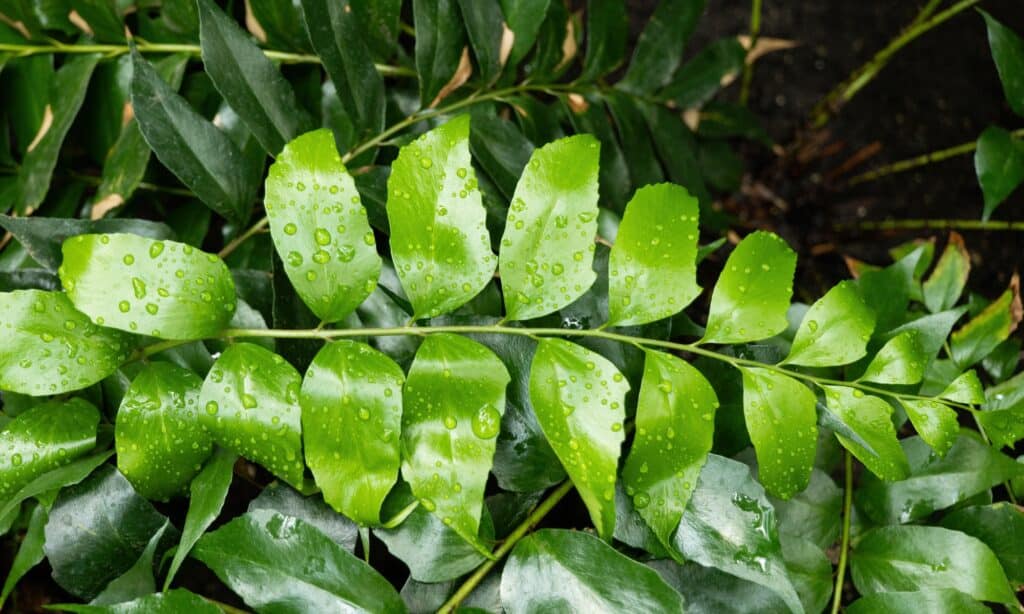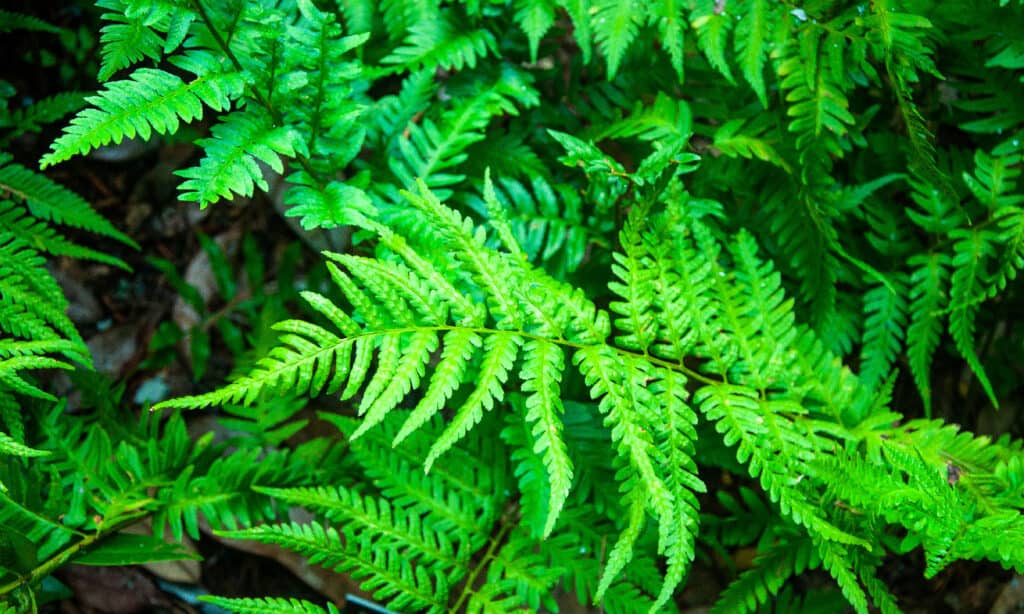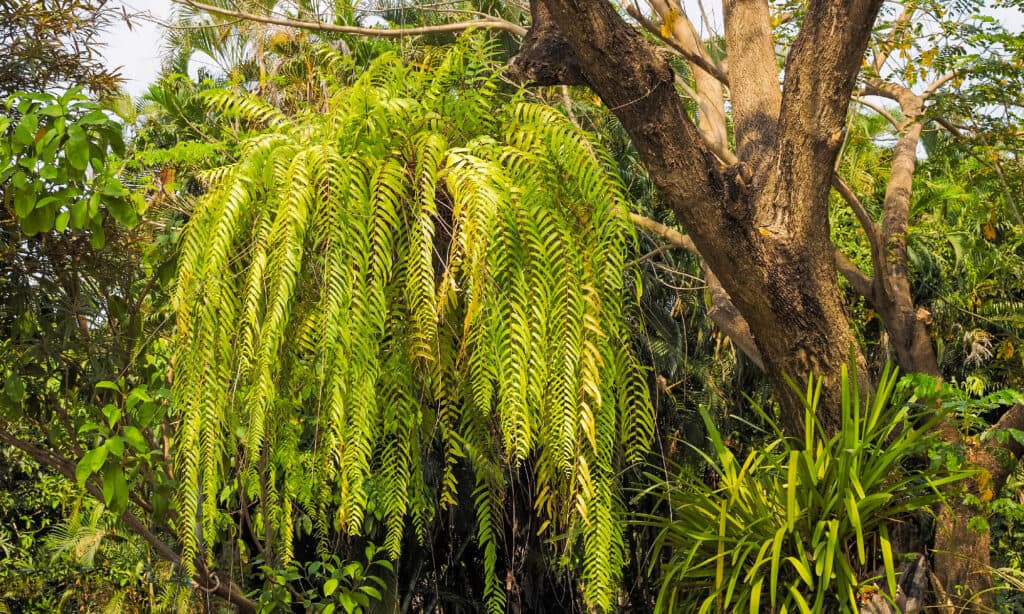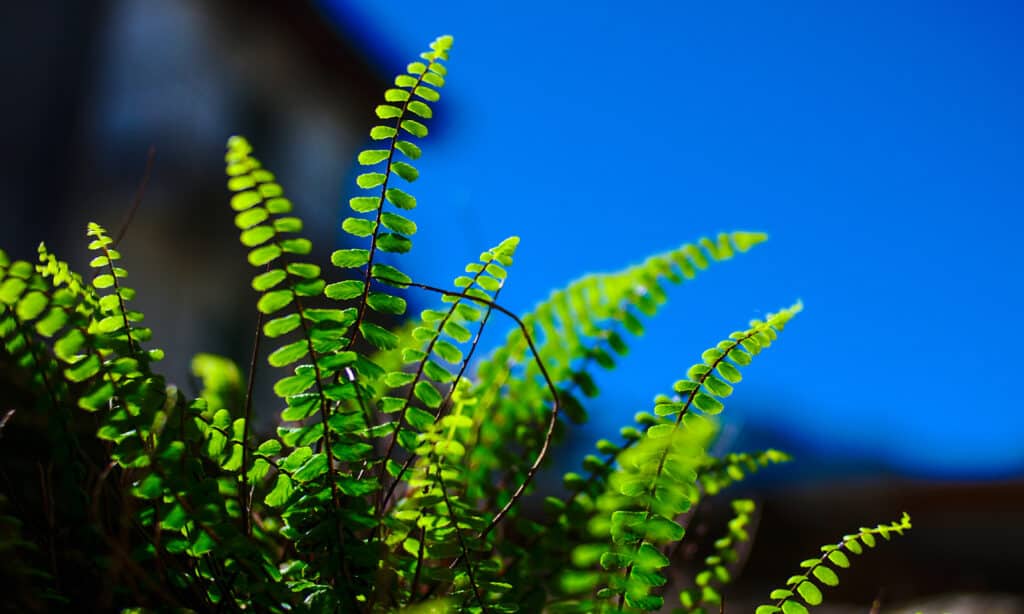Ferns are native to Texas, and you can find them naturally on forest floors, dappled by sunlight that pokes through tall trees. These primitive vascular plants grow best in partly shady areas resembling their habitat. They like humid tropics and temperate environments, and Texas, with its many climactic zones, provides a safe growing zone. Learn about the six best ferns that grow in Texas, including how to care for them and what plants complement them in your garden.

The Six Best Ferns to Grow in Texas
1. Japanese Holly Fern

The Japanese holly fern is suitable to grow in most Texas regions.
©iStock.com/Artur Bogacki
The Japanese holly fern, also known as the house holly fern, is a wood fern native to Eastern Asia. It’s a popular fern in the Texas region for its hardiness, attractive foliage, and ability to withstand the salty air of coastal breezes. In nature, it grows in stable moist areas like coastal cliffs and stream banks. The dark green fronds are stiff, glossy, and fringed, making them appear holly-like.
This rustic plant does well in growing zones six to ten, suitable for Texas climates. In mild winter climates, the Japanese holly fern is evergreen but needs full to partial shade and weekly watering (sometimes more in extreme heat). They look fantastic in containers and pots, but you can also plant them on the north side of a building in a shaded rock garden.
2. Sichuan Lace Fern

Sichuan Lace Fern flourishes from Central Texas to the Southern tip.
©Rodnie Smith/Shutterstock.com
The Sichuan lace is a species of cat claw fern originally from China. This green lacey plant has arching fronds that grow tall and wide and look best when mass planted on a border, in a container, or in a garden. It naturally grows on rocky cliffs, and it thrives in lightly shaded Texas gardens.
This rustic plant looks fantastic in tropical woodland gardens with the filtered sun; it’s deciduous and does not do well in deep shade. It grows in zones eight to ten and flourishes from Central Texas down to the Southern tip, but it may be harder to grow in the Panhandle region. It’s often referred to as the “carrot” fern because it resembles the top of a carrot.
3. Southern Wood Fern

The Southern wood fern grows well in most parts of Texas, except the Panhandle.
©Erin Lindsay Munson/Shutterstock.com
The Southern wood fern is native to the Southern United States and grows wild on the North Carolina coast in swampy forest areas. This deciduous plant grows fast and likes full to partial shade along borders or in rock and woodland gardens. Its light green fronds are fountain-shaped, growing upright and reaching three feet tall.
It’s an excellent foundation plant to grow under shady trees and looks great in zen, rustic, cottage, or tropical gardens throughout most of Texas; the Panhandle may be too cold to thrive. It will do fine in wet or dry shade but must be watered regularly, at least once a week, or more if it’s hot.
4. Brilliance Autumn Fern

The brilliance autumn fern brings a dramatic fall color to rustic gardens.
©iStock.com/Gingerjohns
This semi-evergreen plant grows moderately and brings dramatic autumn colors to your garden. The brilliance autumn fern is highly adaptable and can easily grow throughout most of the country except for the extreme northern and southern regions. However, it may have a more challenging time thriving in Texas coastal areas.
The brilliance autumn fern grows effortlessly and is simple to care for adapting well to dry or cool soil. Its coppery red foliage matures to deep green and stands out in rustic or cottage beds with dappled sunlight or deep shade. You must water at least once a week to maintain evenly moist soil.
5. Tassel Fern

The tassel fern grows perfectly in Northern Texas, including the Panhandle.
©Yuttana Joe/Shutterstock.com
Tassel ferns are herbaceous perennials and are the perfect fern for Northern Texas, especially the Panhandle (growing zones six through eight). These delicate-looking plants are beautiful under flowering shrubs or mass planted as ground cover.
Tassel ferns grow slowly and reach up to two feet. They need full to partial shade with moderate water, about once a week or more in extreme heat. The fronds are elegant and unfurling with fine textures, adding a tasteful touch to the cottage and rustic gardens (or any shady woodland setting). You can also plant them in urban or rock gardens for textural designs.
6. American Maidenhair

American maidenhair ferns look excellent in contemporary gardens.
©Willi Burkhardt/Shutterstock.com
The American maidenhair is a native fern to North America and grows very well in most parts of the country. In Texas, these plants grow best in the Northern regions, from Central to Panhandle. These medium-green fronds are lacy and fan-shaped with curved stems.
It is a cold hardy species that does best in moist, lightly-shaded areas with good air circulation. This deciduous fern thrives in contemporary gardens in full shade, partial shade, and filtered sun. It grows in dense clumps, with their fronds slowly spread as they age; plant them under shady trees for the best results.
How to Care For Ferns in Texas
- Most ferns need adequate drainage but almost constantly moist soil. For the best results, plant them in raised clay-based soil beds and water them weekly. You will need to water more frequently if you live in an arid, hot region.
- Most ferns do well in shaded areas, but some may need partial or filtered light. Be sure to check which condition it needs before planting.
- Semi-tropical ferns grow very well in most Texas climates. They hold up during the hot months (when watered sufficiently), and you don’t need much winter protection.
- Use natural fertilizers instead of strong commercial ones. Forcing your fern to proliferate can damage them. As hardy as they are, they are still somewhat fragile.
What Plants Look Nice With Ferns?

Hosta, coral bells, and bleeding hearts are fantastic companions to ferns in Texas.
©Summer 1810/Shutterstock.com
These plants are the perfect companions for the ferns on this list. Plus, they grow great in the hot Texas climate.
- Coral Bells
- Bleeding Heart
- Hosta
- Ligularia
- Lungwort
- Lenten Rose
- Columbine
The photo featured at the top of this post is © iStock.com/Artur Bogacki
Thank you for reading! Have some feedback for us? Contact the AZ Animals editorial team.






